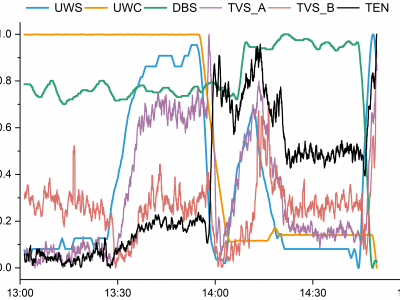1D dataset
This graph illustrates the visualization trend of a subset of the dataset I have uploaded, which comprises 6500*9 data points. The dataset consists of nine columns representing underwater speed (UWS), underwater course (UWC), depth below the surface (DBS), rate of change in speed (RCS), rate of change in course (RCC), rate of change in depth (RCD), trend A and B of vibrational signals (TVS_A, TVS_B) and electromagnetic noise trend (TEN) recorded by the AUV.
- Categories:
 123 Views
123 ViewsClinical/Lab Data Quantitative Continuous age (years), height (cm), weight (kg), bmi (kg/m2) - Body Mass Index, hemoglobin
(g/dL) - Hemoglobin concentration, hba1c (%) - Glycated Hemoglobin, ast (U/L) -
Aspartate Aminotransferase, alt (U/L) - Alanine Aminotransferase, creatinine (mg/dL),
nt proBnp (pg/mL) - N-terminal pro b-type Natriuretic Peptide
Categorical Nominal gender (Male/Female), smoking status (Smoker/Non-smoker), htn (Yes/No) - Hypertension,
dm (Yes/No) - Diabetes Mellitus, ckd (Yes/No) - Chronic Kidney Disease
- Categories:
 152 Views
152 Views


